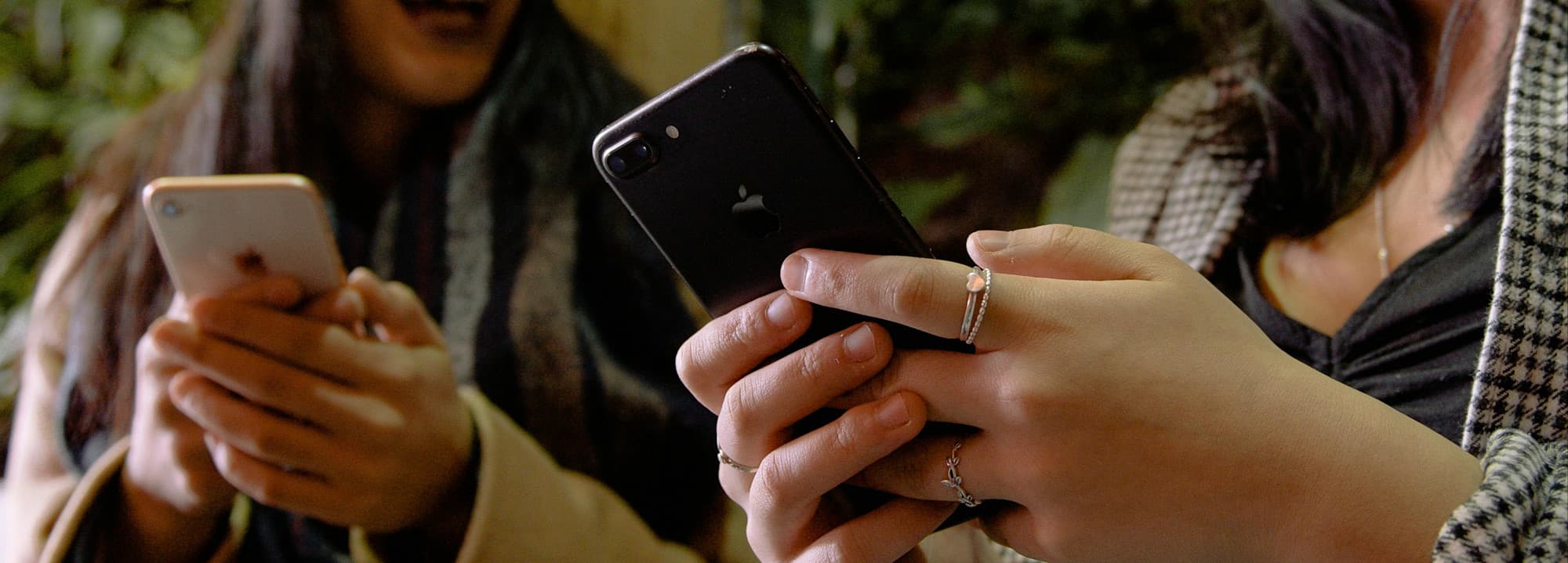
Get-Out-the-Vote Texting: GOTV Tactics to Reach More Voters
Getting your supporters to the polls is the final stage of any political campaign. But in today’s fast-paced, digital-first world, door-knocking alone isn’t enough. To win, you need to reach voters directly, personally, and at scale. That’s where get-out-the-vote (GOTV) texting comes in.
Whether it’s peer-to-peer (P2P) outreach from volunteers or large-scale SMS broadcasts sent through campaign software, GOTV texting is an easy and effective way to remind, motivate, and mobilize your supporters before election day. In this guide, we’ll explain how it works, why it’s so powerful, and how local and Independent candidates can use it to turn out voters without massive budgets or party infrastructure.
What Is Get-Out-the-Vote (GOTV) Texting?
GOTV texting, also called text out the vote, GOTV text banking, or P2P texting for GOTV, is the practice of sending targeted text messages to your supporters during the final phase of your campaign to encourage them to actually cast their ballots.
While early campaign texting usually focuses on persuasion, invitations to campaign events, or fundraising, GOTV texting zeroes in on mobilization; it’s about turning intention into action.
GOTV texts typically:
Remind supporters about early voting or polling place details
Confirm they have a plan to vote
Offer help with transportation or mail-in ballots
Build social pressure by showing community participation with messages like, “Your neighbors are voting!”
Encourage relational outreach like vote tripling, where your supporters text three friends and remind them to vote
Every text serves a single purpose: to make sure your supporters don’t just support you in theory, but show up in reality.
Why GOTV Texting Works
Texting reaches voters where they already are: on their phones. With open rates as high as 98%, text messages outperform email, social media, and traditional mailers. More importantly, they create an instant, human connection that can motivate real behavior change.
Research backs this up:
A 2024 study published in the Journal of Elections, Public Opinion and Parties found that GOTV texting can reduce social inequalities in voter turnout, especially among younger and lower-income voters who are less likely to be reached by other outreach methods.
In 2020, Tech for Campaigns analyzed more than 150 million voter contact texts and found that texting consistently boosted turnout, especially in down-ballot races and local elections where margins were slim. They found texting campaigns to be among the most cost-effective voter contact methods, with peer-to-peer texting contributing measurable increases in turnout across 20+ competitive races. The most effective texts, according to their analysis, were short, positive, and specific, with a clear call to action.
Some research suggests that GOTV texts from trusted friends can lead to an 8.3 percentage point increase in turnout.
In short, texts are personal, accessible, and scalable. For grassroots and Independent campaigns, that makes them one of the most powerful tools in your GOTV arsenal.
Two Main Types of GOTV Texting: Peer-to-Peer vs. Broadcast
Not all texts are created equal. Understanding the difference between P2P and broadcast texting can help you pick the right strategy, or combine both for maximum impact.
Peer-to-Peer (P2P) GOTV Texting
P2P texting involves volunteers or campaign staff sending texts one by one, while using software to speed up the process. This method allows for two-way communication. Recipients can reply with questions or confirmations, and volunteers can respond in real time.
This approach is great for:
Building relationships with voters
Answering logistical questions
Gathering last-minute feedback or support pledges
Encouraging relational actions like vote tripling
LEARN MORE: Explore how P2P texting works and learn how to build an effective P2P strategy.
Broadcast Texting or SMS Blasts
Broadcast texting, sometimes called mass texting or bulk SMS texting, allows campaigns to send thousands of messages at once. These texts are sometimes one-way, limiting the opportunity for dialogue, and are best for sharing quick reminders or updates with your supporter list.
This approach is perfect for:
Election day reminders
Early voting announcements
Calls to volunteer or attend rallies
Urgent, last-minute GOTV pushes
Broadcast texting offers efficiency and scale, which can be ideal for the final 48 hours of a campaign when every minute counts.
How to Run an Effective GOTV Texting Campaign
Whether you’re managing a small volunteer team or running a full-scale campaign, the basics of good texting outreach remain the same. Here’s how to make your messages count:
#1: Target the Right People
Focus your efforts on:
Strong supporters who’ve already expressed their intent to vote for you
Low-propensity voters who need a nudge to follow through
Vote triplers, or supporters who can remind three friends to vote
You don’t need to text everyone. You just need to reach your voters.
#2: Personalize Every Message
Even when you’re sending thousands of texts, personalization matters:
Use voters’ first names.
Reference the voter’s city or community.
Keep your tone human and conversational.
Voters can tell when a message feels automated, so use personalization to build trust, spark recognition, and make supporters feel like they matter. Tech for Campaigns’ 2018 study found that people were 8.2% more likely to vote if they received a text about a candidate or district-specific issue.
Additionally, if you’re using a P2P texting platform, take advantage of the opportunity for two-way dialogue. Encourage volunteers to respond naturally, answer voter questions, and provide quick support, whether that’s helping find polling place info or troubleshooting absentee ballots.
LEARN MORE: Get inspired by examples of compelling intro texts that help you connect with voters.
#3: Send the Right Message at the Right Time
Timing is everything in GOTV texting.
A general timeline you can use to guide your outreach:
2 weeks before election day, start confirming supporters’ voting plans. Ask if they know where, when, and how they’ll cast their ballot.
1 week out, share early voting or mail-in ballot deadlines. If your state’s early voting window and mail-in deadlines are significantly earlier than election day, you may want to send reminders further in advance.
In the final 72 hours, ramp up urgency with countdown-style messages. Keep your tone upbeat and encouraging, not guilt-driven.
On election day, focus your energy on your “needs-to-vote” list, like people who’ve said they’ll vote but haven’t yet checked in.
To maximize your reach, schedule your texts for late morning or early evening, when most people are available but not overwhelmed. Avoid early mornings, late nights, and meal times unless you’re targeting specific worker groups with adjusted schedules.
Match your tone to the moment. Early GOTV texts should feel helpful and informative, while election day messages should radiate confidence, excitement, and community energy. Layering multiple touches through texts, calls, and social media reminders also reinforces your message and can increase follow-through.
#4: Make It Easy to Act
Every text should make voting simpler, not harder. Your supporters already want to help; your job is to remove every barrier that might stop them.
Start by including one clear, direct call-to-action in each message. Don’t ask voters to do three things at once. Instead, ask them to check their polling place, confirm their mail-in ballot, or commit to voting today.
Whenever possible, add short, trusted links that take voters directly where they need to go:
A link to their official polling place lookup page
A link to early voting hours in their county
A ballot tracker or voter ID requirements page
Your campaign’s website for last-minute volunteer shifts or ride requests
Make sure your links are mobile-friendly and load fast. A voter waiting in line or on their lunch break should be able to open your link, find their info, and take action in seconds.
When you make it effortless for supporters to follow through, your texts stop being reminders. They become action triggers.
#5: Stay Compliant
Every GOTV or political text message you send must follow federal regulations under the Telephone Consumer Protection Act (TCPA) and carrier rules for 10DLC (10-Digit Long Code) texting.
Here’s what that means in practice:
Always identify yourself. Voters should know immediately who’s contacting them.
Obtain consent where possible. For opt-in lists, from sign-ups on your website or event forms, make sure people understand they’re agreeing to receive campaign texts.
Include a clear opt-out option. Every message must contain an easy way to unsubscribe, like “Reply STOP to opt out.”
Monitor your volunteers. If you’re using peer-to-peer texting, ensure your team knows what’s compliant and what’s not.
Compliance doesn’t have to be complicated, but it does need to be consistent. Following the rules keeps your messages out of spam filters and your campaign in voters’ good graces.
#6: Use Proven Scripts
You don’t need to reinvent the wheel to send messages that sound natural, clear, and motivating. That’s where using tested GOTV text scripts comes in handy.
Here’s an example you can adapt:
Hi [Voter Name], it’s [Your Name] from [Campaign Name].
Just a reminder, election day is tomorrow [Date].
Your polling place is [Site] at [Address].
We’re excited for you to vote [Candidate]!
Do you have a plan for what time you’ll go vote?
Reply STOP to opt out.
Scripts like this strike a balance between friendly and urgent. It’s clear enough to prompt action, but warm enough to feel like a real conversation.
LEARN MORE: You don’t need to write your own message from scratch. Check out free GOTV texting scripts for examples you can personalize and make your own.
#7: Integrate GOTV Texting into a Bigger Strategy
Texting shouldn’t exist in isolation. It’s most powerful when combined with other outreach efforts in your GOTV plan, such as:
Phone Banking: Reinforce texts with personal calls.
Door-to-Door Canvassing: Follow up on text interactions with face-to-face engagement.
Social Media: Amplify your reminders with posts and stories.
Email Follow-Ups: Use inbox reminders for deeper engagement.
Every channel strengthens the others. The more consistent and coordinated your reminders, the more likely your supporters are to show up.
GOTV Texting: Personal, Proven, and Essential
At the end of your campaign, every reminder matters. A single text could be the difference between a supporter voting or forgetting, and between you winning your election or coming up short.
GOTV texting works because it meets people where they are in real time with a personal nudge that cuts through the noise. When you combine empathy, clarity, and timing, you can transform quick messages into real turnout.
Independent and local candidates don’t need party machines to make an impact, just people, purpose, and the right tools. Texting is how grassroots campaigns scale that power. Every text you send helps bridge the gap between belief and action.
At GoodParty.org, we’re empowering Independent candidates like you to mobilize voters with up to 5,000 free texts, proven GOTV scripts, and campaign tools designed to help you connect authentically with your community.
Your supporters already believe in your message. Now’s the time to help them turn that belief into a ballot.
Photo by Wendy Wei
Get started with free texts and tools to power your campaign to victory and make every message count.

